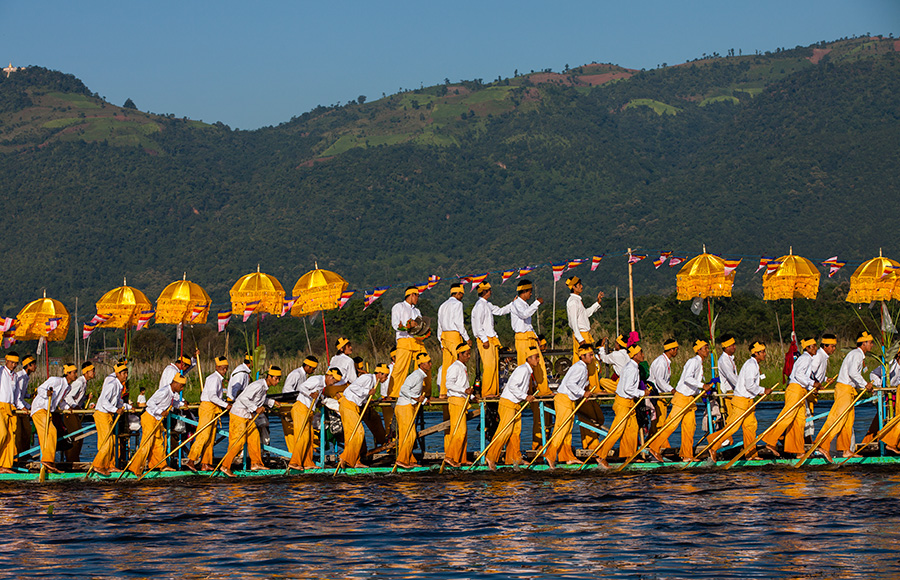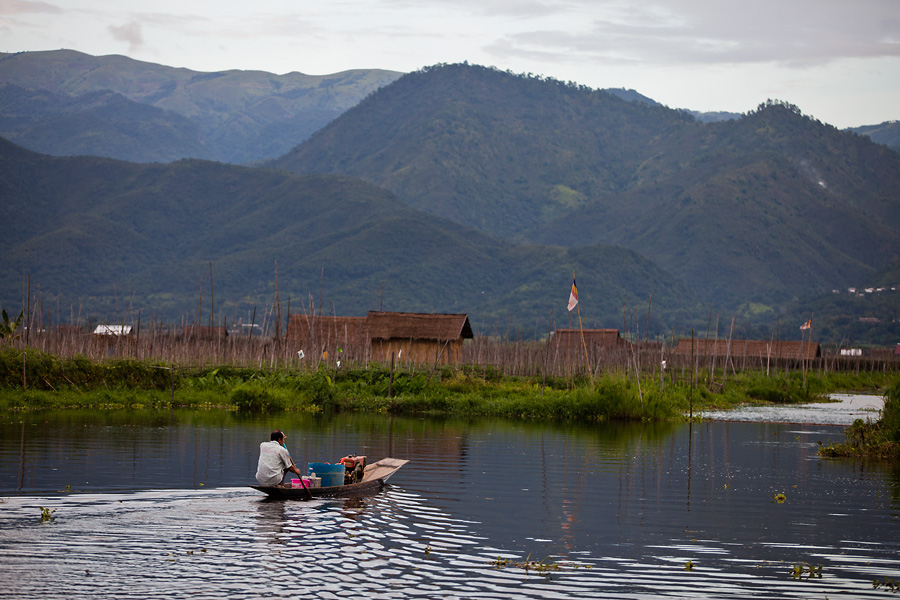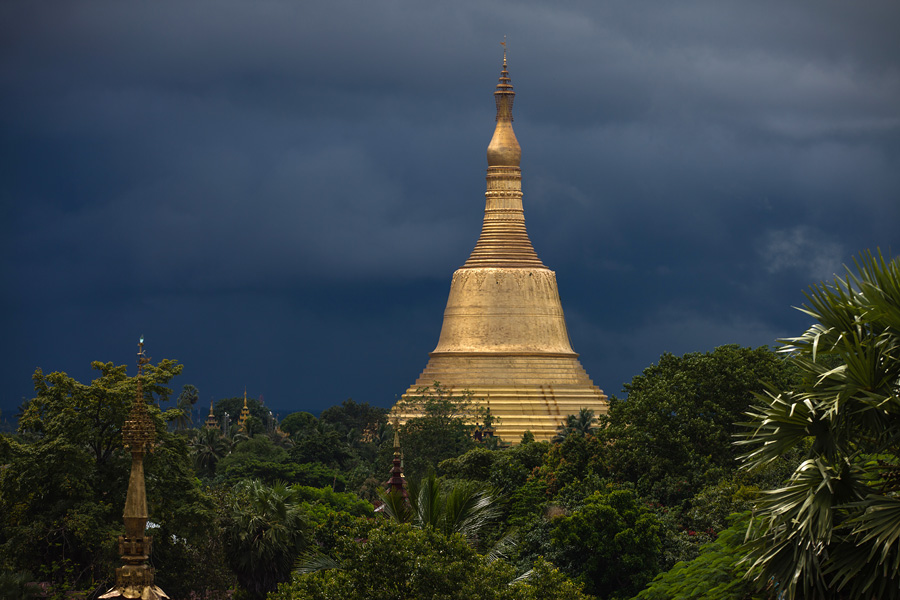
Also see: Our photography tour to Myanmar in October
It was a festival morning. About a hundred or so boats had gathered as a long thick band in the middle of the lake, waiting for the procession to pass by. A hundred boats would seem like a lot, but against the scale of the lake that is spread more than a hundred sq kilometers, the boats did not make up to much. As we approached the place of all the action, I heard the sound of bells at a distance to my left, somewhere in the vicinity of a monastery in Lin Kin Village. The procession was about to begin. Today’s procession was to take four Buddha idols of Phaung Daw Oo pagoda from Lin Kin to Nyaung Shwe town.

Inle Lake sets out for this festive celebrations every year in October-November months. The procession of Buddha images begins from their temple of residence–the Phaung Daw Oo pagoda–and crisscrosses every village in the lake taking eighteen days before returning home. Everyday, as Buddha moves from village to village, entire community gathers together to escort the parade with great fanfare. Every village decorates a long boat that will be part of the ‘boatcade‘. Each boat, carrying more than a hundred people rowing in sync to music, escort a gilded boat carrying the four golden Buddha images slowly glides over the lake. But one Buddha image continues to stay out of the festival.
Living just a few kilometers away from the bustling settlements and well-worn paths around Myanmar’s Inle Lake are villages that still live off the grid. A strong sense of community has helped them adapt to the modern world and continue to subsist in a fast-changing country.
My connecting-the-dots from the popular Inle Lake to Shan Hills started as I wandered the streets in search of things to do in the area. A travel-agency boldly announced trekking options, but a smaller sign that talked about a ‘home-stay’ got me interested. The deal was made in minutes and my plans for the next two days was set. I was heading to the hills next morning and stay in a village inhabited PaO people, one of the many indigenous communities in Shan state.

Shan Hills, as seen from Inle Lake.
We began early next morning. It was a pleasant post-monsoon dawn when a thin layer of clouds kept the air crisp – perfect for the long walk ahead. We quickly put behind us the line of restaurants and lodges on the edge of Inle Lake and hiked up the green hills to the east. The path took us up the gentle slopes through the clearings, past wooded sections, occasional opening into corn fields and subsequently through cheerful grassland slopes with a scattering of colourful flowers. The few hamlets we saw along the way were small, with only a handful of houses located adjacent to the fields.
Also see: Our photography tour to Myanmar
I made a two-week visit to Myanmar in 2013 and totally loved travelling through its cities and countrysides. Before I begin the detailed travelogues, here is a quick look at things that I loved about the country.
1. Pagodas, pagodas and pagodas.
Shwedagon Pagoda is perhaps the most well-known of all the pagodas in Myanmar, if not in the entire world. The 99 meter high tower is one of the holiest sites in the country. It is coated with several tonnes of gold on its surface and studded with thousands of precious stones. After the sun goes down, it glitters in so much of light that even the clouds hovering high above reflect its lights in an otherwise dark sky. Yet, Shwedagon is just one of many many charming pagodas littering the country’s landscapes.

The day after I visited Shwedagon, I was in the small town of Bago to see an even taller and equally majestic Shwemadaw Pagoda, rising over hundred meters and surrounded by rich-green, dense tropical vegetation. A week after that, I was in Inle Lake Region, keenly exploring small but beautiful cluster of Pagodas. Some of them were old and worn out and yet retained a charm not very different from the brilliant oldness of Camboadian Temples. There were new ones too, glittering in a golden paint and dwarfing the surroundings in their shine.



